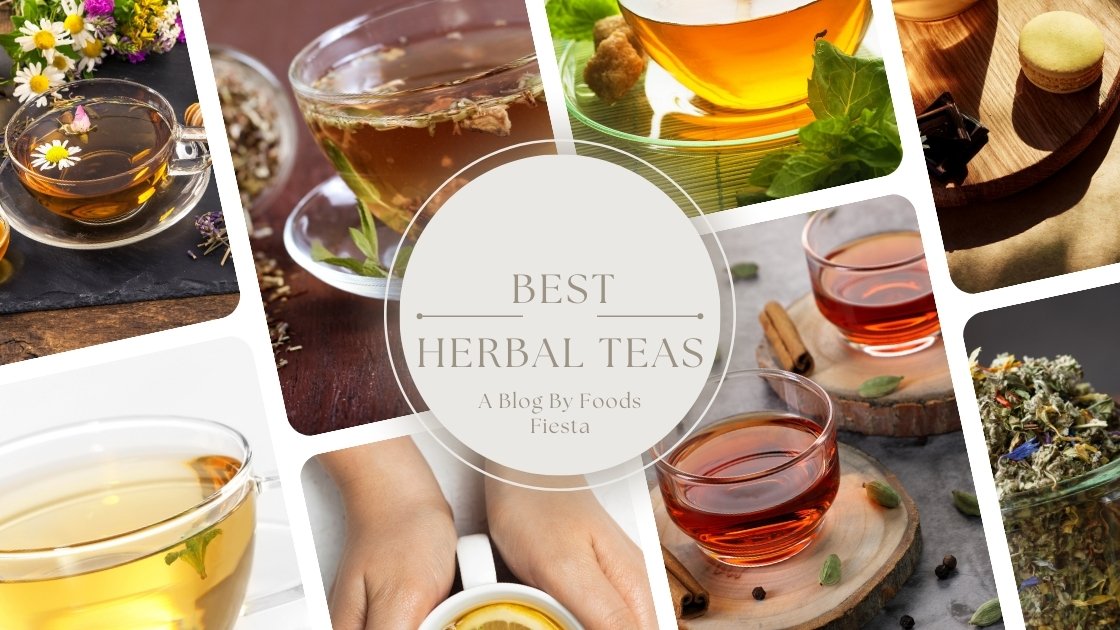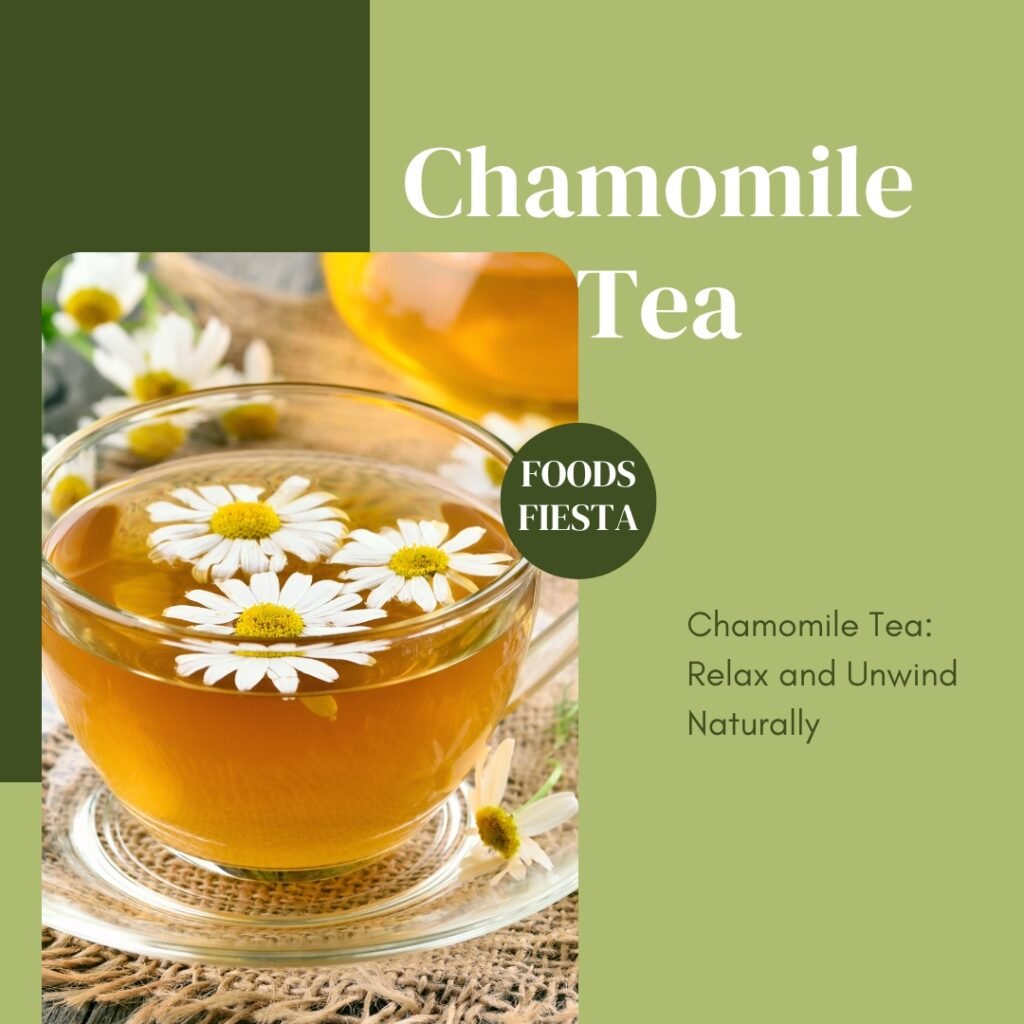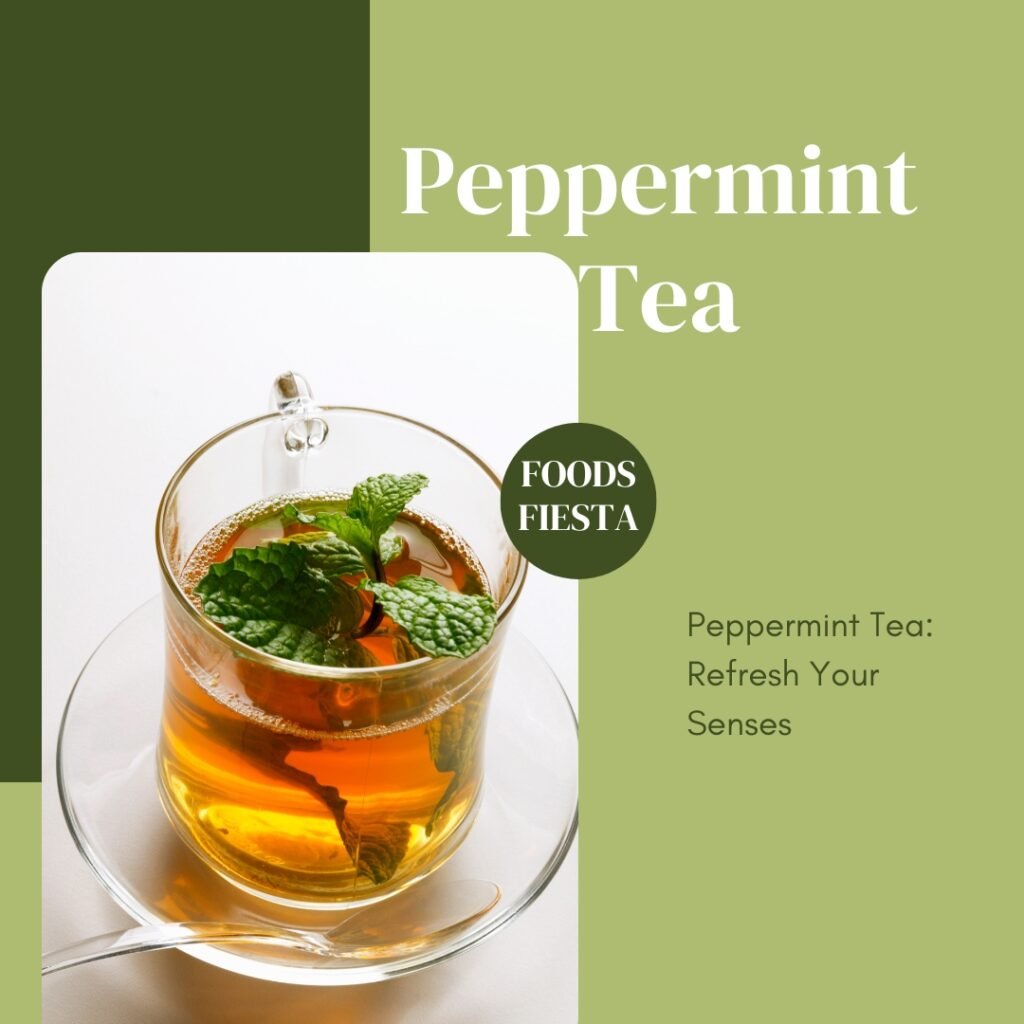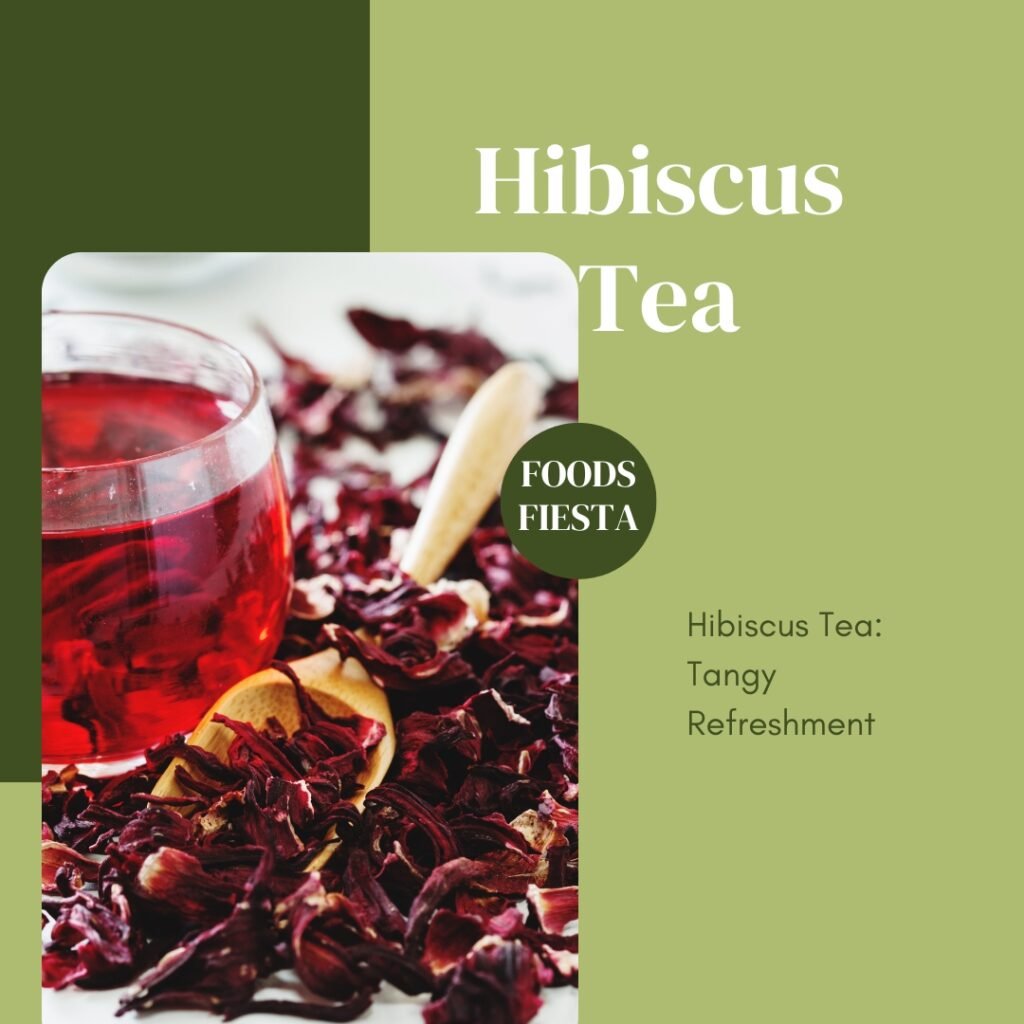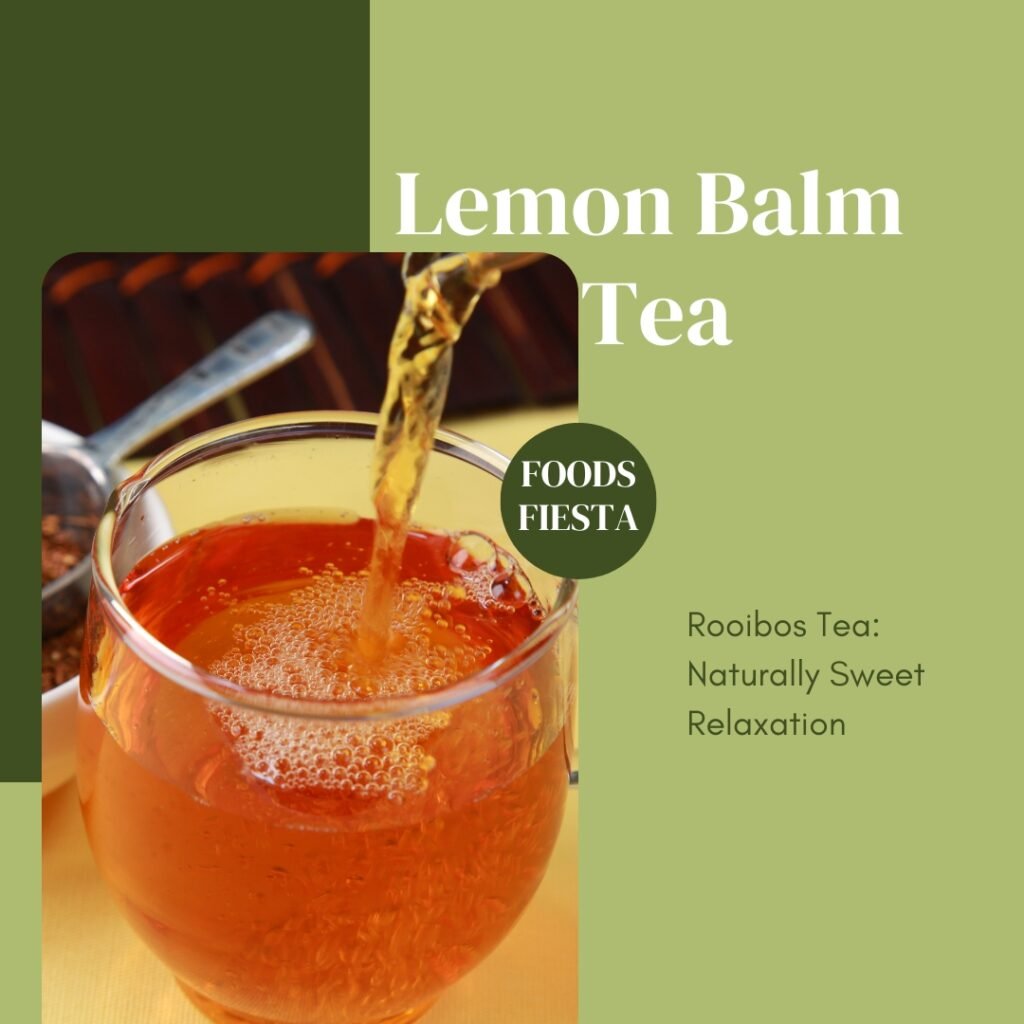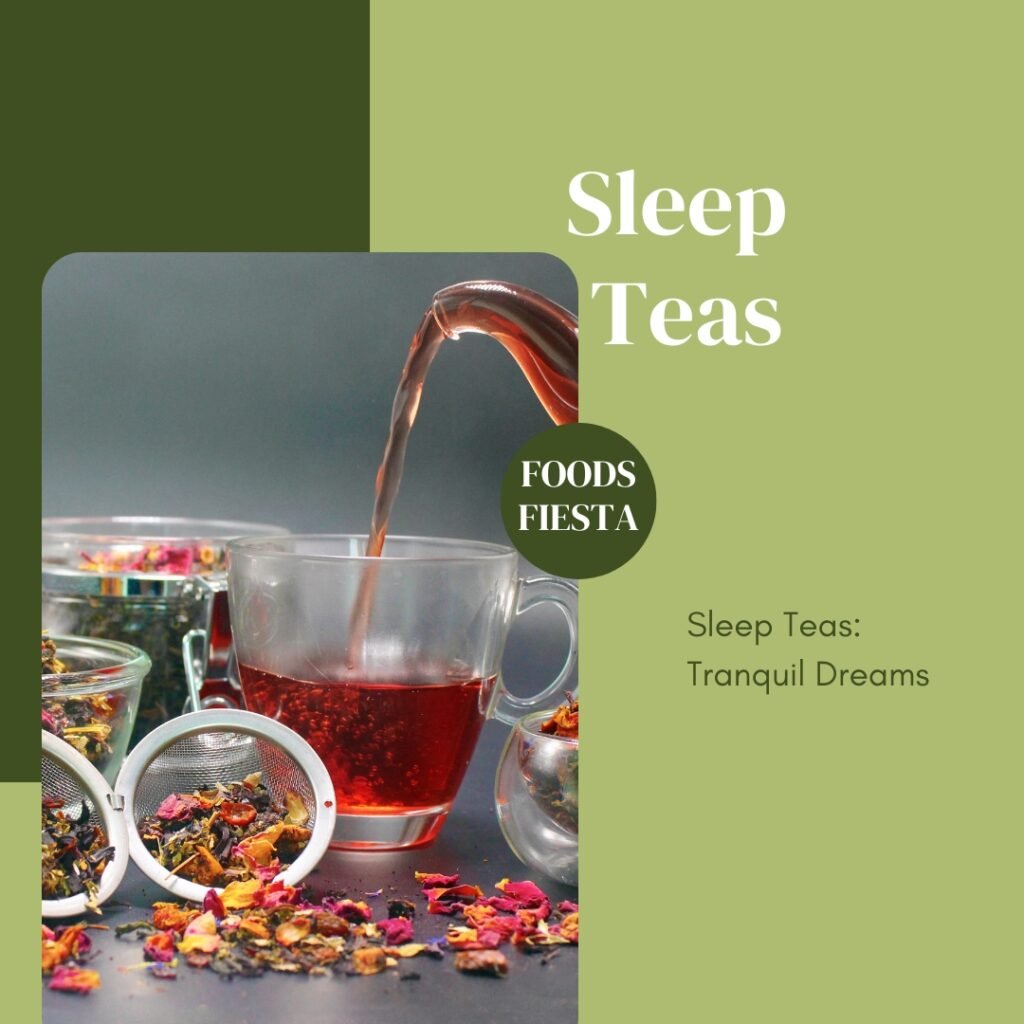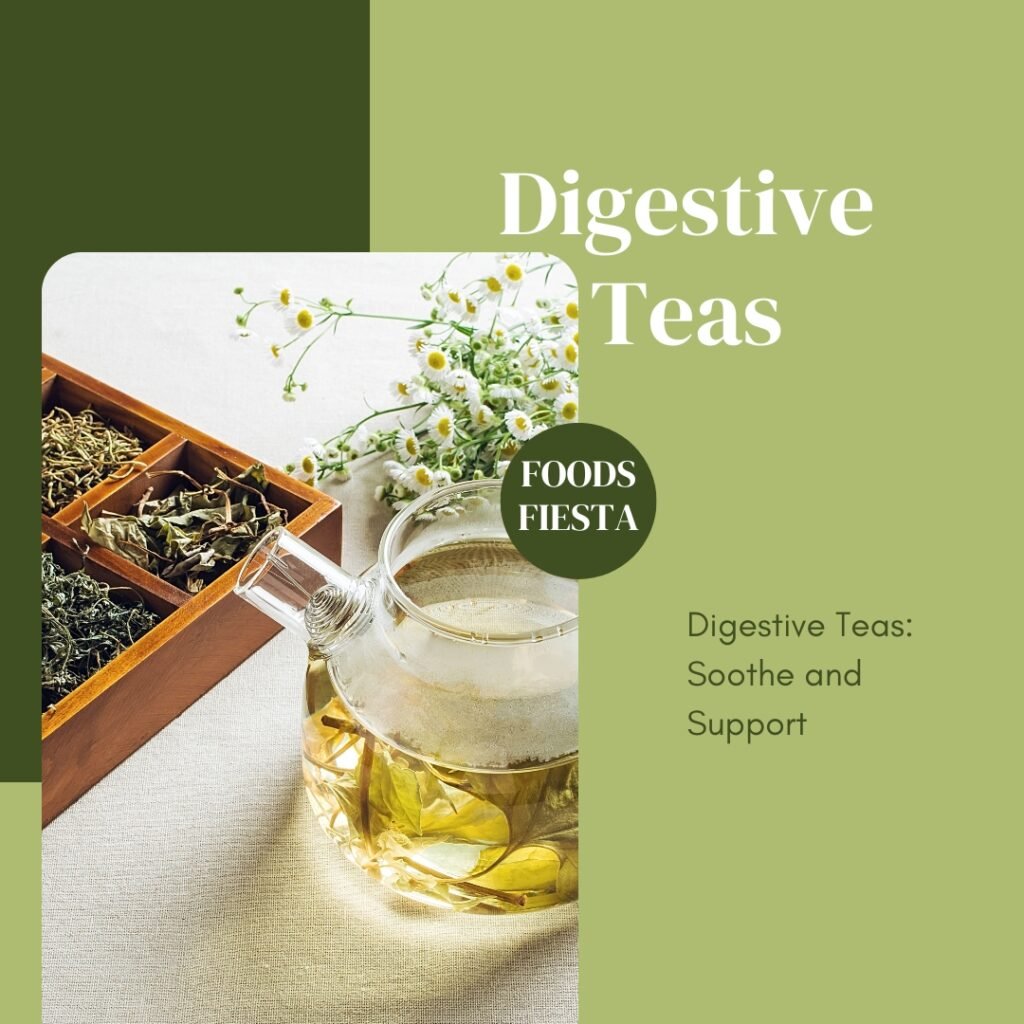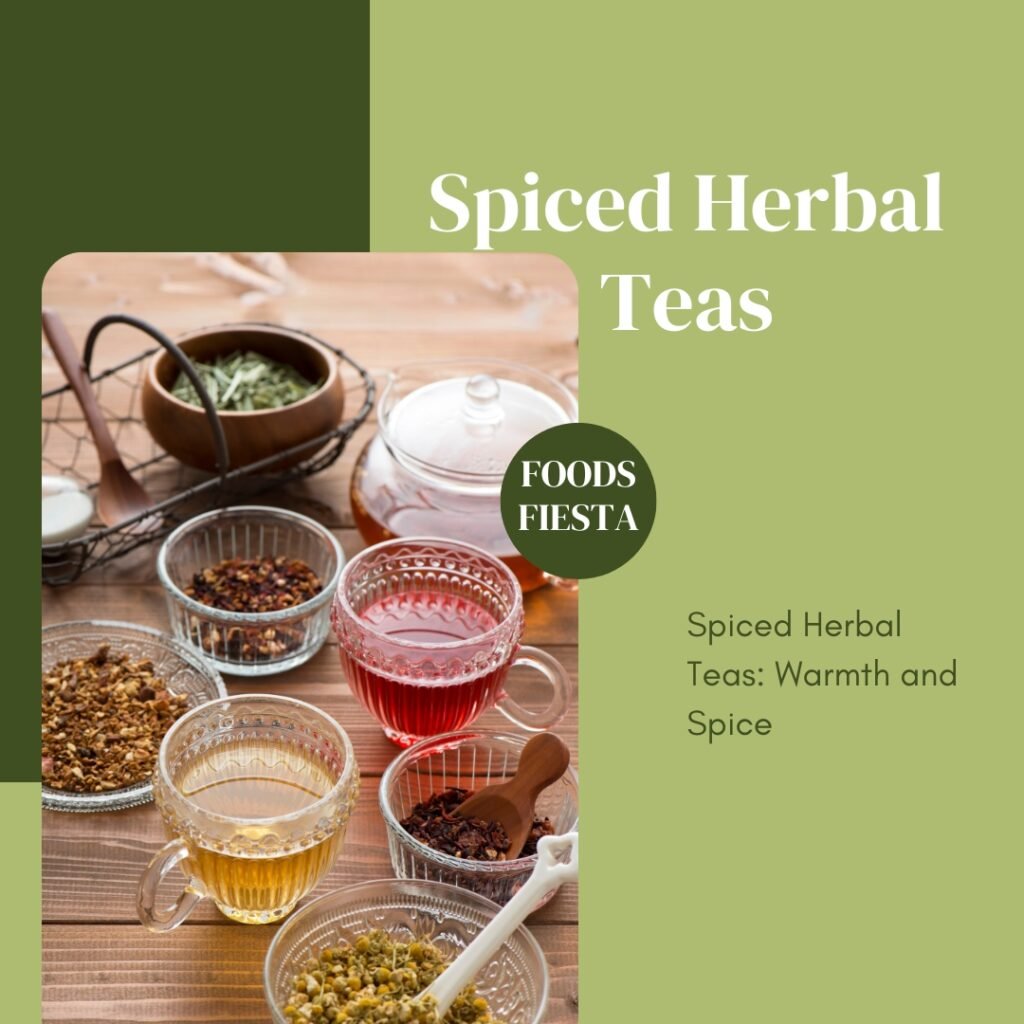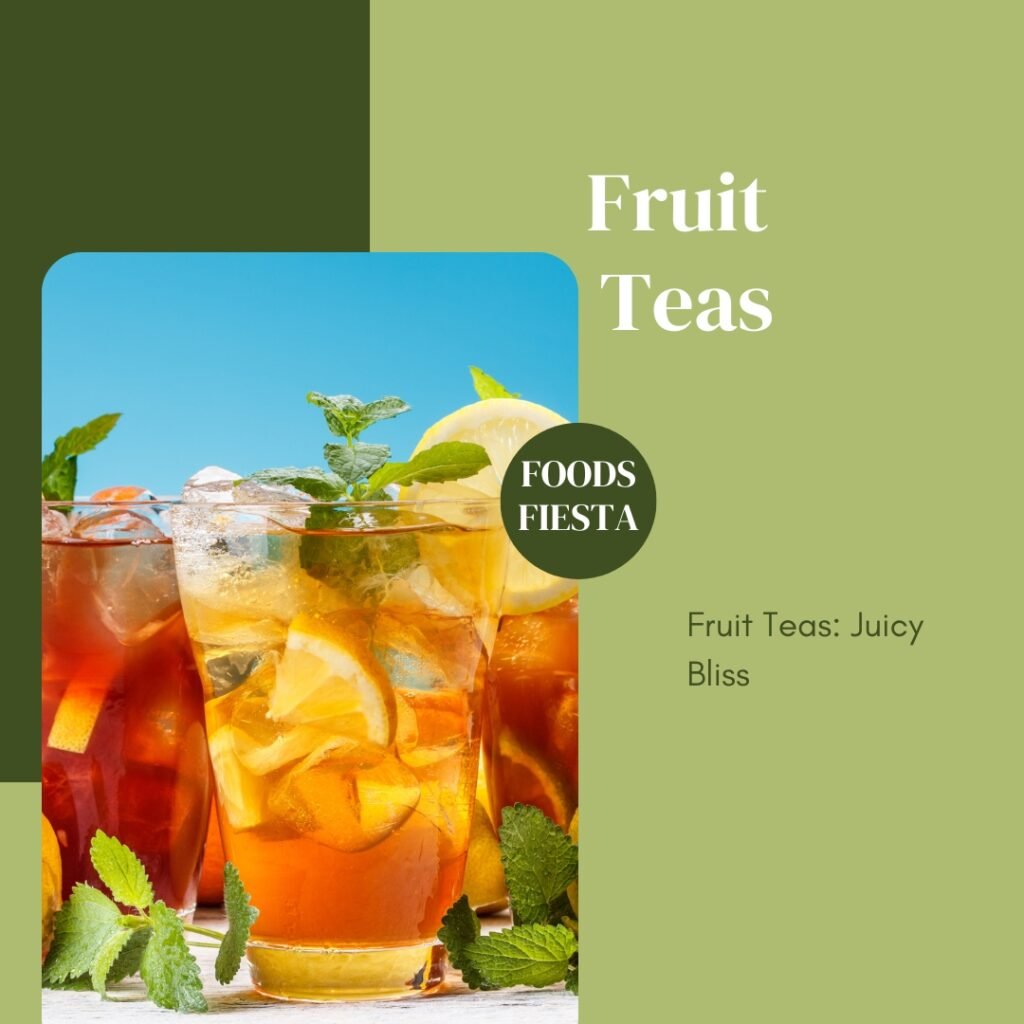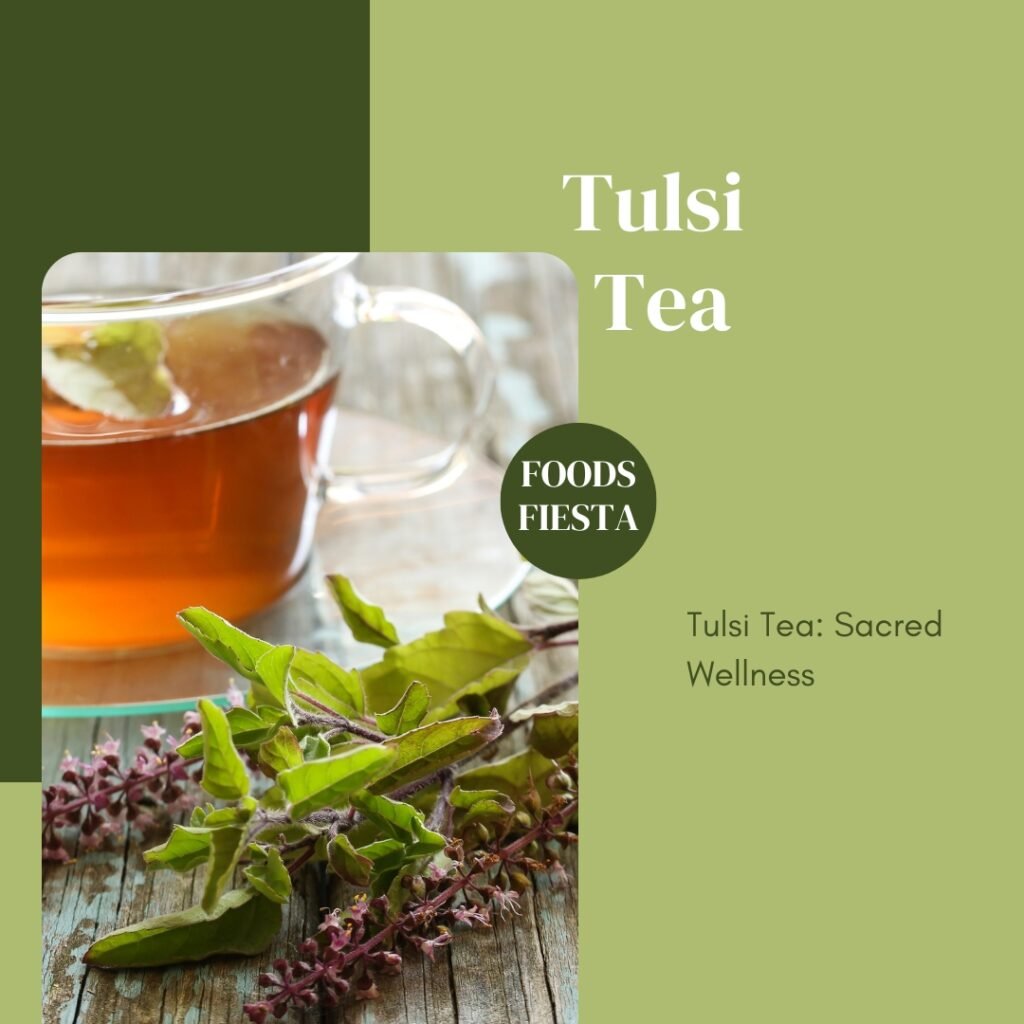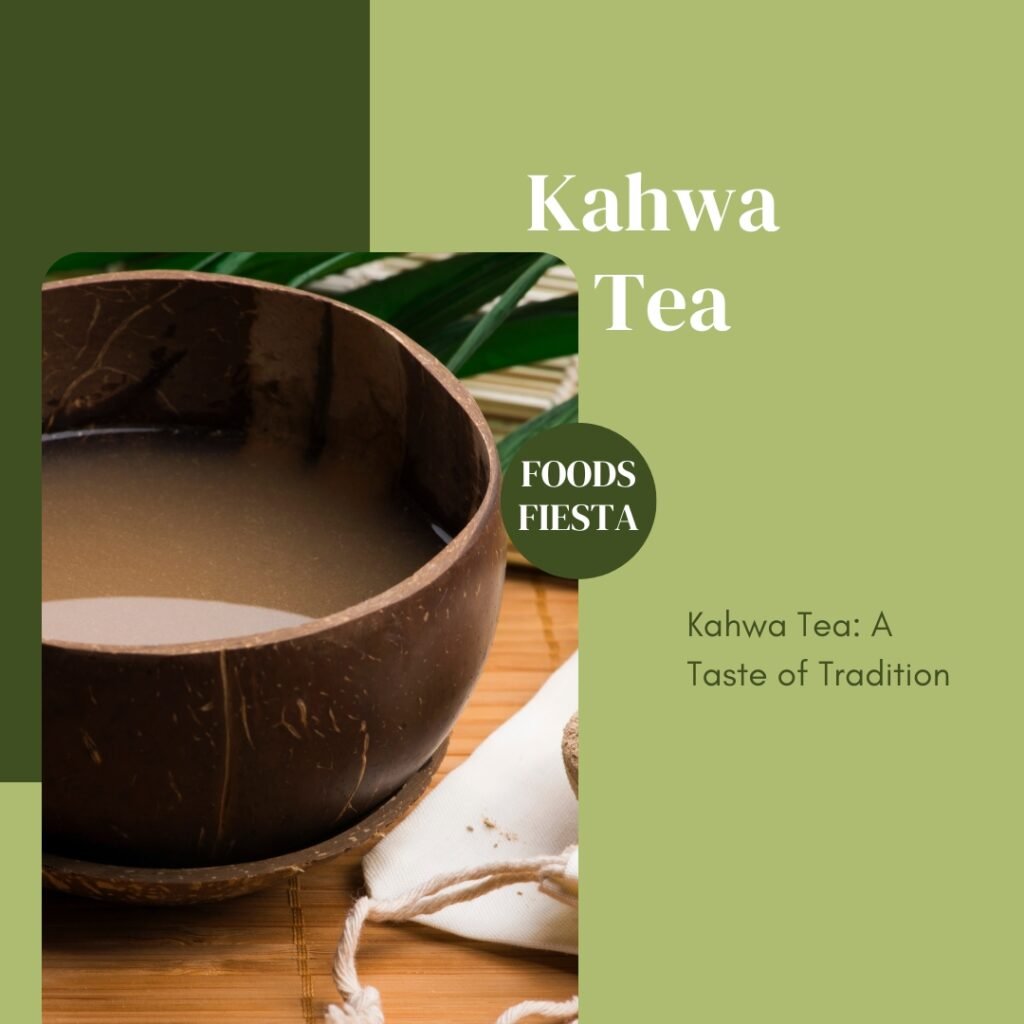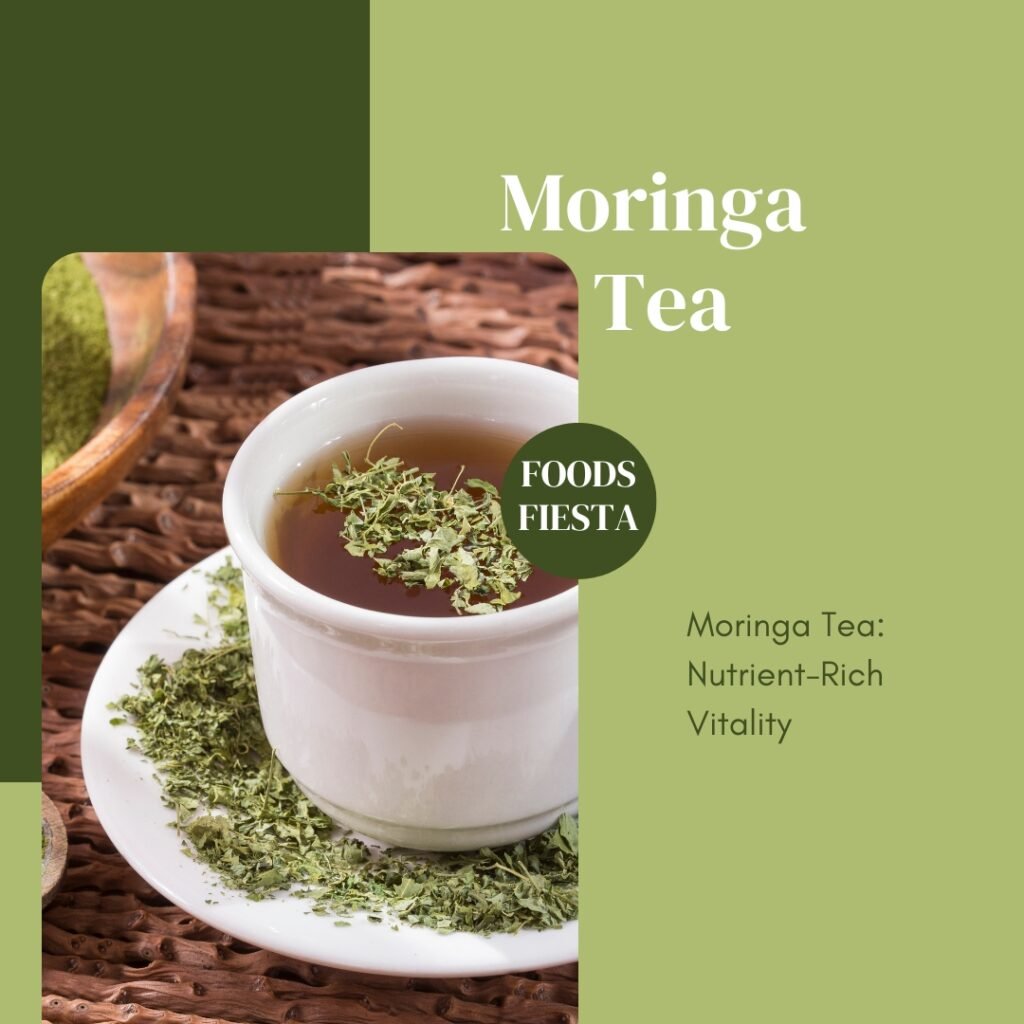Best Herbal Teas: Detailed Overview and Uses
Herbal teas, known as tisanes, have been cherished for centuries for their soothing properties, diverse flavors, and numerous health benefits. Unlike traditional teas made from the Camellia sinensis plant, herbal teas are caffeine-free and are made from various parts of plants, including leaves, flowers, roots, seeds, and bark. The world of herbal teas is vast and varied, offering various options to suit different tastes and wellness needs. In this comprehensive guide, Foods Fiesta will explore the Best Herbal Teas, delving into their unique characteristics, benefits, and how they can enhance your well-being.
Introduction to Best Herbal Teas
Herbal teas are beverages made by steeping or decocting herbs, spices, flowers, or other plant materials in hot water. They have been used for centuries across different cultures for their medicinal properties and as a soothing, enjoyable drink. The term “herbal tea” can be a bit of a misnomer, as these infusions do not contain tea leaves. Instead, they encompass a wide range of botanicals, each bringing its own distinct flavor and health benefits.
The popularity of herbal teas has surged in recent years, driven by growing awareness of natural health remedies and a desire for caffeine-free alternatives to traditional tea and coffee. From calming chamomile to invigorating peppermint, each herbal tea offers a unique experience and potential health benefits. Whether you are looking to unwind after a long day, boost your immune system, or simply enjoy a flavorful beverage, the best herbal teas can provide a perfect solution.
History of Best Herbal Teas
The history of herbal teas spans thousands of years and traverses many cultures. Ancient civilizations such as the Egyptians, Chinese, Greeks, and indigenous peoples of the Americas have long recognized the therapeutic properties of plants. These early societies used herbal infusions not only as beverages but also as medicinal remedies to treat a variety of ailments. For example, ancient Egyptians would use herbs like chamomile and peppermint to address digestive issues and soothe the mind. Similarly, traditional Chinese medicine has long employed herbal teas to balance the body’s energy, known as “Qi,” and to treat illnesses.
In medieval Europe, herbal teas were a staple in monastic gardens, where monks cultivated a variety of herbs for medicinal purposes. These herbal remedies were documented in extensive medical texts and passed down through generations. As global trade expanded, so did the exchange of herbal knowledge, leading to a rich tapestry of herbal tea traditions across the world. Today, the best herbal teas are celebrated not only for their rich flavors but also for their historical significance and cultural heritage.
The Best Herbal Teas and Their Benefits
1. Chamomile Tea
Chamomile tea is made from the dried flowers of the chamomile plant, which belongs to the Asteraceae family. This tea is renowned for its mild, apple-like flavor and its calming, soothing properties. Chamomile has been used for centuries in traditional medicine, particularly in Europe and the Middle East, as a natural remedy for various ailments. The tea is typically light yellow and is often consumed before bedtime due to its relaxing effects.
Flavor and Aroma: Chamomile tea is known for its gentle, apple-like flavor and soothing aroma.
Benefits: Chamomile tea is one of the best herbal teas for relaxation and sleep. It is renowned for its calming effects, making it an excellent choice for unwinding before bedtime. Chamomile has been shown to help reduce anxiety, promote better sleep, and even aid in digestion.
Preparation: To prepare chamomile tea, steep dried chamomile flowers in hot water for 5-10 minutes. For a stronger brew, increase the steeping time.
2. Peppermint Tea
Peppermint tea is an infusion made from the leaves of the peppermint plant, a hybrid of watermint and spearmint. Known for its refreshing and invigorating flavor, peppermint tea has a strong, cool taste and a menthol aroma. The peppermint plant is native to Europe and the Middle East but is now widely cultivated around the world. This tea is often enjoyed for its ability to invigorate the senses and refresh the palate.
Flavor and Aroma: Peppermint tea boasts a refreshing, minty flavor with a cooling sensation.
Benefits: Peppermint tea is highly regarded for its digestive benefits. It can help alleviate symptoms of indigestion, bloating, and gas. Additionally, its invigorating aroma can help improve focus and reduce stress.
Preparation: Steep fresh or dried peppermint leaves in hot water for 5-10 minutes. Enjoy it hot or cold for a refreshing drink.
3. Ginger Tea
Ginger tea is made from the root of the ginger plant, a flowering plant in the Zingiberaceae family. The tea is characterized by its spicy, pungent flavor with a hint of sweetness. Ginger is native to Southeast Asia and has a long history of use in culinary and medicinal practices. The root is typically sliced or grated and then infused in hot water to produce a warming and aromatic tea.
Flavor and Aroma: Ginger tea has a spicy, warming flavor with a hint of sweetness.
Benefits: Ginger tea is one of the best herbal teas for digestive health. It is effective in relieving nausea, motion sickness, and digestive discomfort. Ginger also has anti-inflammatory properties and can help boost the immune system.
Preparation: To make ginger tea, slice fresh ginger root and simmer in hot water for 10-15 minutes. Add honey and lemon for added flavor and health benefits.
4. Hibiscus Tea
Hibiscus tea is made from the dried calyces of the hibiscus flower, known for its deep red color and tart, cranberry-like flavor. This tea is enjoyed both hot and cold and is popular in various cultures around the world, including Africa, the Caribbean, and Central America. The hibiscus plant is part of the Malvaceae family and is prized not only for its vibrant color but also for its tangy taste and refreshing qualities.
Flavor and Aroma: Hibiscus tea is tart and fruity, with a deep red color.
Benefits: Hibiscus tea is rich in vitamin C and antioxidants. It has been shown to help lower blood pressure, support heart health, and improve liver function. Its refreshing taste makes it a great choice for a cool, revitalizing beverage.
Preparation: Steep dried hibiscus flowers in hot water for 5-10 minutes. Sweeten with honey or enjoy it iced with a splash of lime.
5. Rooibos Tea
Rooibos tea, also known as red bush tea, is made from the leaves of the Aspalathus linearis plant, which is native to South Africa. This tea has a naturally sweet, nutty flavor with hints of vanilla. Rooibos is a distinctive tea because it is naturally caffeine-free and has a rich, reddish-brown color when brewed. It has become increasingly popular worldwide as a flavorful and healthy alternative to traditional teas.
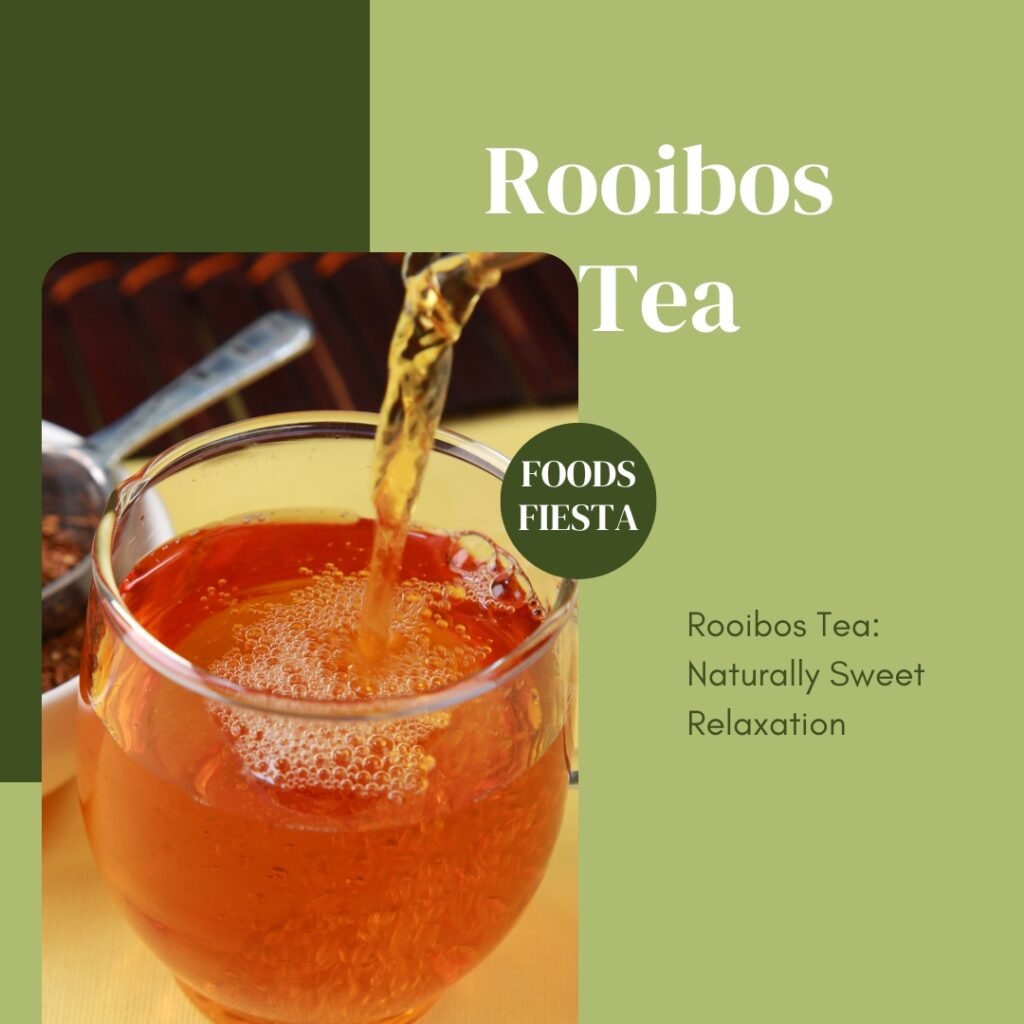
Flavor and Aroma: Rooibos tea has a naturally sweet, nutty flavor with a hint of vanilla.
Benefits: Rooibos tea is a South African herbal tea known for its high antioxidant content. It supports heart health, reduces inflammation, and can improve skin health. It is also low in tannins, making it a smooth and gentle tea.
Preparation: Steep rooibos leaves in hot water for 5-10 minutes. Enjoy it plain or with milk and honey for a richer flavor.
6. Lemon Balm Tea
Lemon balm tea is made from the leaves of the lemon balm plant, a member of the mint family. The tea has a mild, lemony flavor with a hint of mint, making it a pleasant and soothing beverage. Lemon balm is native to Europe, North Africa, and West Asia and has been used traditionally for its calming properties. The plant is also known for attracting bees, hence its botanical name, Melissa officinalis.
Flavor and Aroma: Lemon balm tea has a mild, lemony flavor with a hint of mint.
Benefits: Lemon balm tea is known for its calming and stress-relieving properties. It can help reduce anxiety, improve mood, and support cognitive function. It is also used to aid digestion and relieve headaches.
Preparation: Steep fresh or dried lemon balm leaves in hot water for 5-10 minutes. Enjoy it hot or cold with a slice of lemon.
7. Lavender Tea
Lavender tea is brewed from the dried buds of the lavender plant, known for its distinct floral aroma and slightly sweet taste. Lavender is a member of the mint family and is native to the Mediterranean region. This tea is often enjoyed for its fragrant scent and is used in various culinary and therapeutic applications. The light purple buds produce a delicate, soothing tea that is perfect for relaxation.
Flavor and Aroma: Lavender tea has a floral, slightly sweet flavor with a calming aroma.
Benefits: Lavender tea is one of the Best Herbal Teas for relaxation and stress relief. It can help alleviate anxiety, improve sleep quality, and reduce headaches. Its soothing properties make it a perfect bedtime drink.
Preparation: Steep dried lavender buds in hot water for 5-10 minutes. Add honey or lemon for extra flavor.
8. Rosehip Tea
Rosehip tea is made from the fruit of the wild rose plant, specifically, the seed pods that remain after the petals have fallen. This tea is known for its bright red color and tangy, slightly sweet flavor. Rosehips are rich in natural compounds and have been used traditionally in various cultures for their health benefits. The tea is popular for its refreshing taste and vibrant appearance.
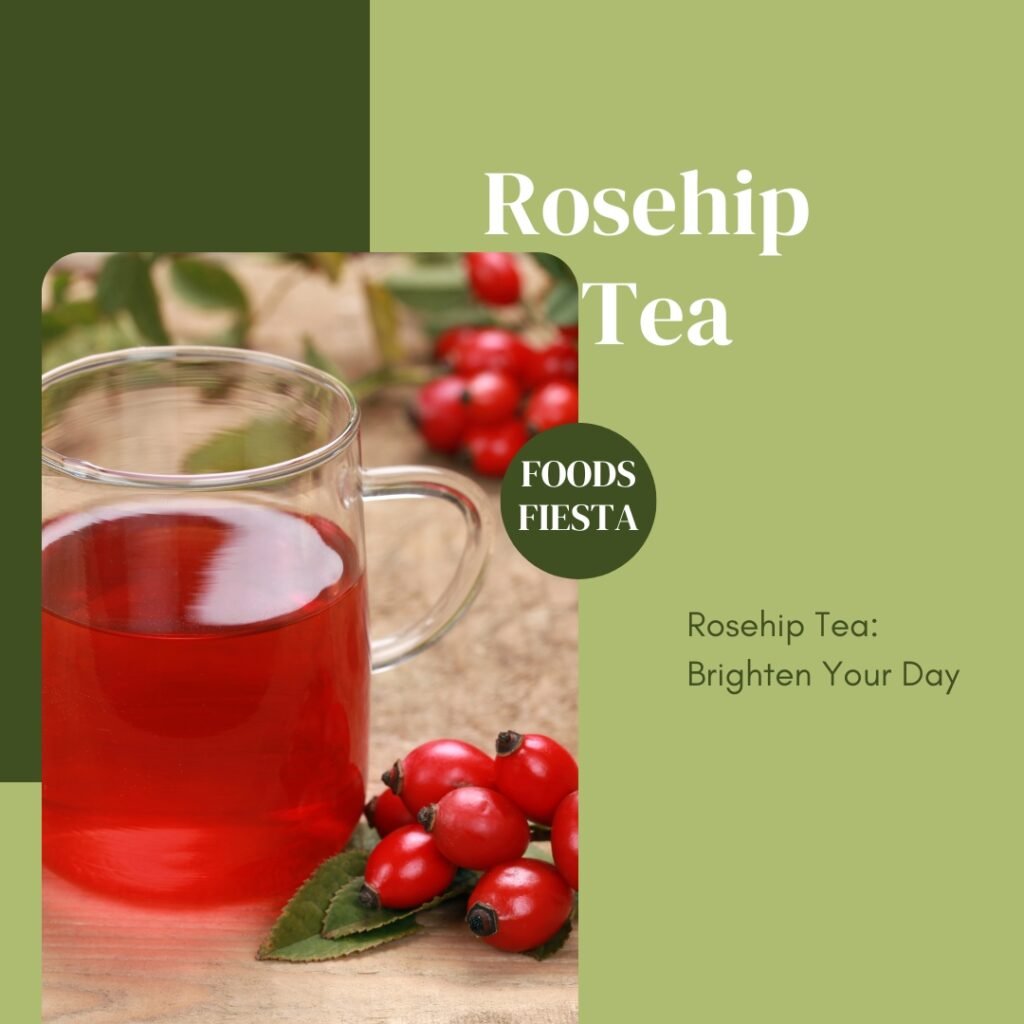
Flavor and Aroma: Rosehip tea is fruity and tangy, with a vibrant red color.
Benefits: Rosehip tea is rich in vitamin C and antioxidants. It supports immune health, reduces inflammation, and can help improve skin health. Its bright, fruity flavor makes it a refreshing drink.
Preparation: Steep dried rosehips in hot water for 5-10 minutes. Enjoy it hot or cold, sweetened with honey if desired.
Specialty and Blended Best Herbal Teas
1. Detox Teas
Detox teas are blends of various herbs and spices designed to support the body’s natural detoxification processes. These teas often include ingredients such as dandelion root, burdock root, and milk thistle, which are believed to aid in cleansing the liver and kidneys. Detox teas are typically consumed as part of a health regimen aimed at eliminating toxins and improving overall wellness. They can have a range of flavors, from earthy to slightly bitter, depending on the ingredients used.
Flavor and Aroma: Detox teas vary in flavor, often combining earthy, spicy, and sweet notes.
Benefits: Detox teas are blends designed to support the body’s natural detoxification processes. They often include ingredients like dandelion root, burdock root, and milk thistle, which help cleanse the liver and kidneys. These teas can aid digestion, reduce bloating, and improve overall wellness.
Preparation: Follow the specific steeping instructions for the blend you choose. Detox teas are typically enjoyed as part of a cleansing regimen.
2. Sleep Teas
Sleep teas are herbal blends specifically formulated to promote restful sleep and relaxation. These teas commonly contain ingredients like chamomile, valerian root, passionflower, and lavender, which are known for their calming effects. Sleep teas are often consumed before bedtime to help unwind and prepare the body for sleep. The flavors of sleep teas are generally mild and soothing, with floral and herbal notes.
Flavor and Aroma: Sleep teas often have soothing, herbal flavors with floral and minty notes.
Benefits: Sleep teas are formulated to promote restful sleep. They often contain calming herbs such as valerian root, passionflower, and chamomile. These teas can help relax the mind and body, making it easier to fall asleep and stay asleep.
Preparation: Steep the blend according to the instructions, usually for 5-10 minutes. Enjoy a cup before bedtime for the best results.
3. Digestive Teas
Digestive teas are designed to support digestive health and alleviate discomfort associated with digestion. These teas often include herbs like peppermint, ginger, fennel, and licorice root, which are known for their digestive properties. Digestive teas can help soothe the stomach and promote healthy digestion. The flavors of these teas can range from sweet and licorice-like to minty and spicy, providing a pleasant drinking experience after meals.
Flavor and Aroma: Digestive teas can have a range of flavors, from sweet and licorice-like to minty and spicy.
Benefits: Digestive teas are designed to aid digestion and relieve discomfort. Common ingredients include fennel, licorice root, and peppermint, which can help reduce bloating, gas, and indigestion.
Preparation: Steep the blend according to the instructions, typically for 5-10 minutes. Drink after meals to support digestion.
4. Spiced Herbal Teas
Spiced herbal teas are blends that include a variety of spices, such as cinnamon, cloves, cardamom, and ginger, to create a warming and aromatic beverage. These teas are enjoyed for their rich, complex flavors and are often associated with comforting and festive occasions. Spiced herbal teas can be enjoyed year-round, but they are particularly popular during the colder months for their warming qualities.
Flavor and Aroma: Spiced herbal teas feature warm, aromatic flavors from spices like cinnamon, cloves, and cardamom.
Benefits: Spiced herbal teas are not only delicious but also beneficial for digestion and circulation. The warming spices can help stimulate digestion, reduce inflammation, and support overall health.
Preparation: Steep the blend according to the instructions, usually for 5-10 minutes. Enjoy it hot for a warming, comforting drink.
5. Fruit Teas
Fruit teas are herbal blends that include dried fruits and fruit peels, offering a naturally sweet and tangy flavor. Common ingredients in fruit teas include apple, berry, citrus peels, and hibiscus. These teas are caffeine-free and can be enjoyed hot or cold, making them a versatile and refreshing option. Fruit teas are popular for their vibrant colors and fruity flavors, making them a favorite among those who enjoy a sweet and flavorful beverage.
Flavor and Aroma: Fruit teas have bright, fruity flavors and vibrant colors.
Benefits: Fruit teas are refreshing and hydrating, often rich in vitamins and antioxidants. They can boost the immune system, improve skin health, and provide a delicious, caffeine-free alternative to sugary drinks.
Preparation: Steep the blend according to the instructions, typically for 5-10 minutes. Enjoy it hot or iced for a refreshing treat.
Regional and Cultural Best Herbal Teas
1. Yerba Mate
Yerba mate is a traditional South American tea made from the dried leaves of the Ilex paraguariensis plant. Known for its robust, earthy flavor, yerba mate is unique because it contains caffeine, providing a stimulating effect similar to coffee and traditional tea. It is traditionally consumed from a hollowed gourd with a metal straw called a bombilla. Yerba mate is highly popular in countries like Argentina, Paraguay, and Brazil.
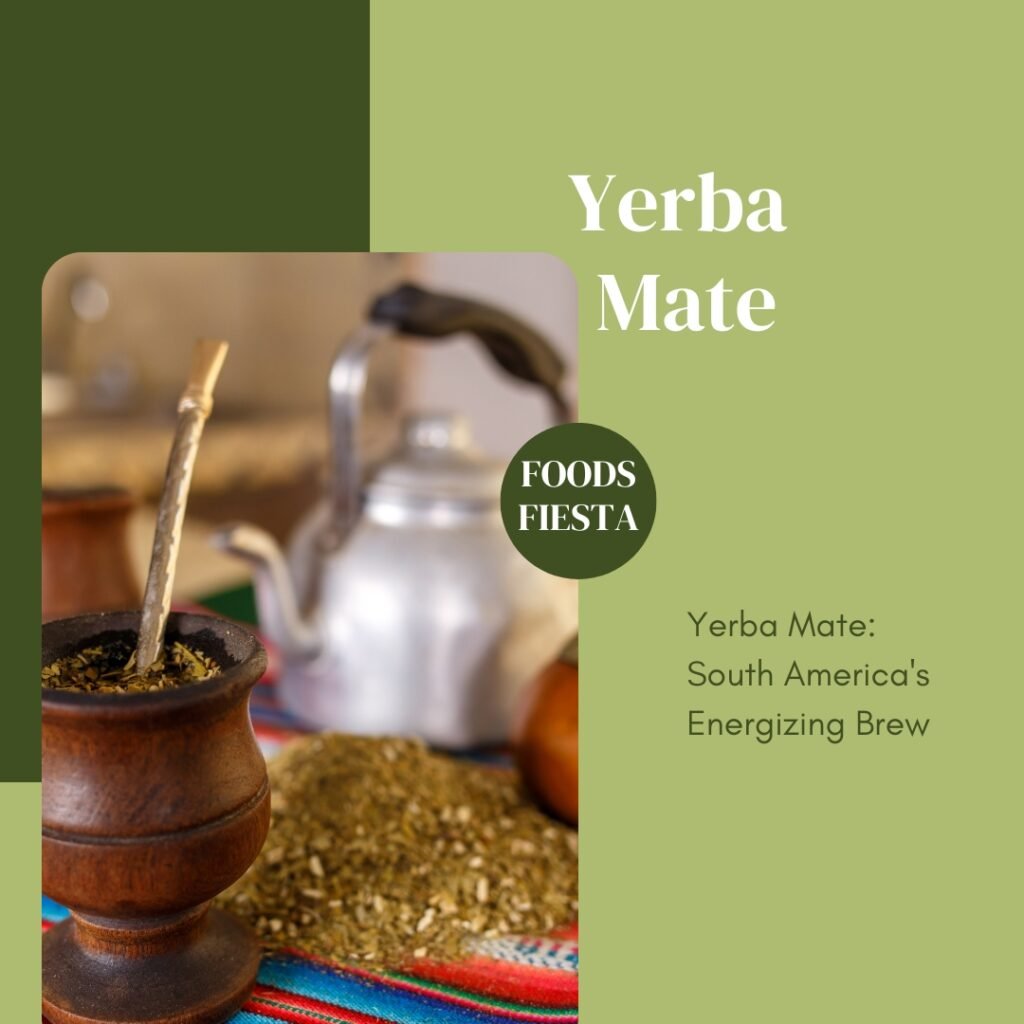
Flavor and Aroma: Yerba mate has a robust, earthy flavor with a slightly bitter taste.
Benefits: Yerba mate is a traditional South American tea known for its stimulating properties. It contains caffeine and theobromine, which can enhance focus, energy, and mood. Yerba mate is also rich in antioxidants and nutrients.
Preparation: Steep yerba mate leaves in hot water for 3-5 minutes. Traditionally, it is sipped through a metal straw (bombilla) from a hollow gourd.
2. Tulsi (Holy Basil) Tea
Tulsi tea, also known as holy basil tea, is made from the leaves of the Ocimum sanctum plant, revered in India for its adaptogenic properties. The tea has a warm, spicy flavor with hints of clove and pepper. Tulsi is considered a sacred plant in Hindu culture and is often used in Ayurvedic medicine. The tea is known for its ability to balance the body and mind, making it a staple in many wellness routines.
Flavor and Aroma: Tulsi tea has a warm, spicy flavor with a hint of clove and pepper.
Benefits: Tulsi tea is revered in India for its adaptogenic and stress-relieving properties. It helps balance the body, reduce stress, and support immune health. Tulsi is also known for its anti-inflammatory and antioxidant benefits.
Preparation: Steep fresh or dried tulsi leaves in hot water for 5-10 minutes. Enjoy it plain or with a touch of honey.
3. Kahwa Tea
Kahwa Tea is made from the root of the kava plant (Piper methysticum), traditionally consumed in the Pacific Islands for its calming and sedative effects. The tea has an earthy, slightly bitter taste and produces a numbing sensation in the mouth. Kahwa is known for its ability to promote relaxation and reduce anxiety, making it a popular choice for social and ceremonial occasions in cultures like Fiji and Vanuatu.
Flavor and Aroma: Kahwa Tea has an earthy, slightly bitter taste with a numbing effect on the tongue.
Benefits: Kahwa Tea is traditionally consumed in the Pacific Islands for its calming and sedative effects. It can help reduce anxiety, improve sleep, and promote relaxation. Kava contains compounds called kavalactones that have a tranquilizing effect on the body.
Preparation: Steep Kahwa root in hot water for 5-10 minutes. Due to its potent effects, it is recommended to consume kava tea in moderation.
4. Moringa Tea
Moringa tea is made from the leaves of the Moringa oleifera tree, known for its high nutritional content. The tea has a mild, slightly earthy flavor with a hint of spinach. Moringa is native to South Asia but is now cultivated in many tropical and subtropical regions. The leaves are rich in vitamins, minerals, and antioxidants, making moringa tea a nutritious and healthful beverage.
Flavor and Aroma: Moringa tea has a mild, slightly earthy flavor with a hint of spinach.
Benefits: Moringa tea is gaining popularity for its high nutritional content and numerous health benefits. It is rich in vitamins, minerals, and antioxidants, supporting immune health, energy levels, and overall wellness.
Preparation: Steep dried moringa leaves in hot water for 5-10 minutes. Enjoy it plain or with lemon and honey for added flavor.
Conclusion About Best Herbal Teas
Herbal teas offer a delightful and healthful way to enjoy the benefits of nature’s bounty. From calming chamomile and invigorating peppermint to the exotic flavors of yerba mate and tulsi, the Best Herbal Teas provide a range of options to suit every taste and wellness need. Whether you are seeking relaxation, digestive support, immune enhancement, or simply a delicious beverage, there is an herbal tea for you.
Incorporating herbal teas into your daily routine can bring a sense of tranquility and well-being. Experiment with different types and blends to discover your favorites, and enjoy the journey through the rich and diverse world of herbal teas. Remember, the Best Herbal Teas are not only a treat for the senses but also a gift for your health and wellness.
